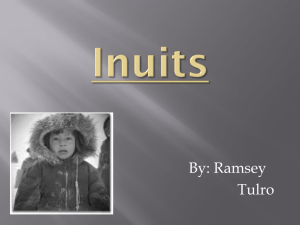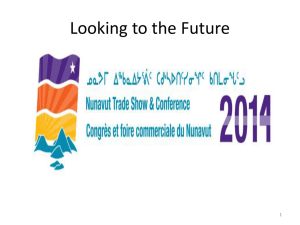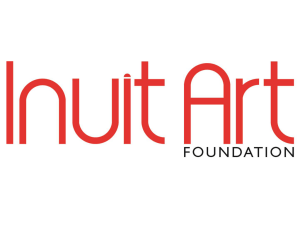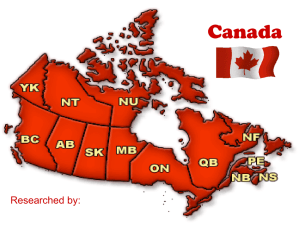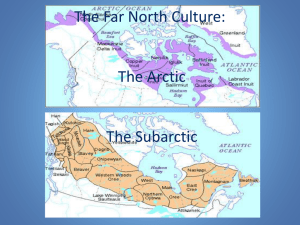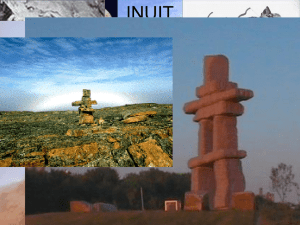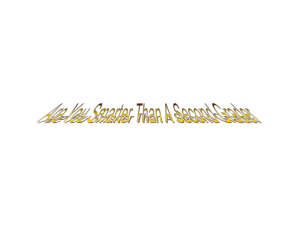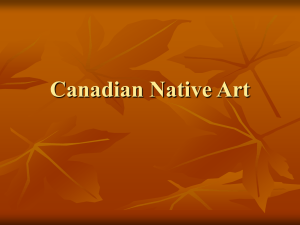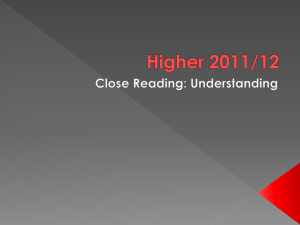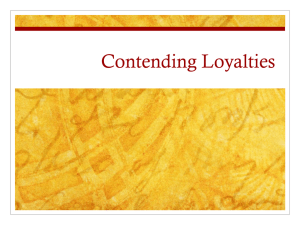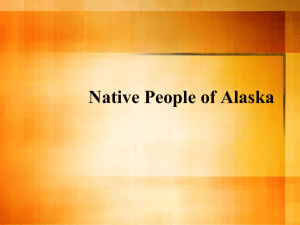and the presentation
advertisement
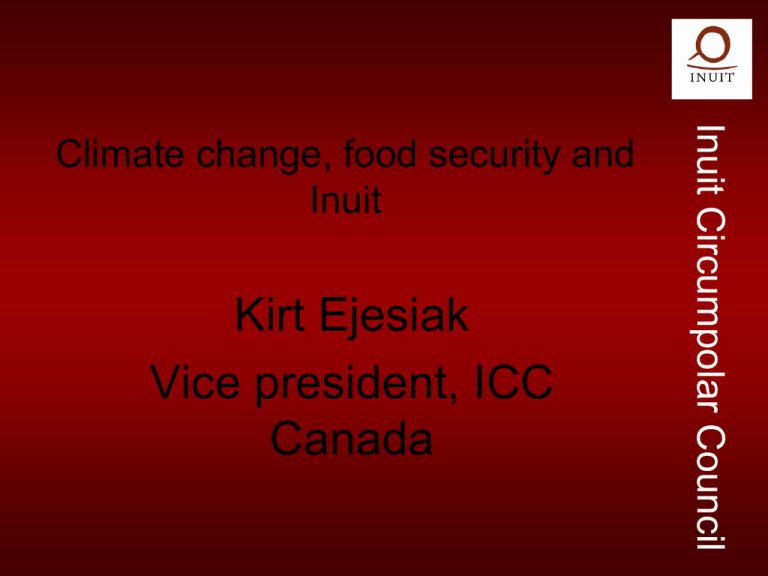
Kirt Ejesiak Vice president, ICC Canada Inuit Circumpolar Council Climate change, food security and Inuit ICC: Who we are Inuit Circumpolar Council 155,000 Inuit live in the Arctic spread across Greenland, Canada, Alaska (USA) and Chukotka (Russia). The Inuit Circumpolar Council advocates for Inuit rights internationally. ICC: What we do Climate Change Food security Wildlife (Biodiversity) Contaminants Trade Language Traditional Knowledge Research and policy Inuit Circumpolar Council • • • • • • • • Inuit of Canada Inuit Circumpolar Council Inuit Circumpolar Council Food security, therefore, could be deemed the most important issue of our time. Following the 2009 World Summit on Food Secu In October 2010, the Committee on World Food Security met and determined there was a need for, “A tool to map food security Inuit Circumpolar Council • The Economics of Climate Change, “Climate change will have a wide range of effects on the environment, which could have knock-on consequences for food production. The combined effect of several factors could be very damaging.” Sir Nicholas Stern, 2007 Intergovernmental Panel on Climate Change (IPCC) 4th Assessment 2007 Vulnerability and Adaptation to Climate Change Workshop (VACCA) 2008 Inuit Circumpolar Council Arctic Climate Impact Assessment 2005 2009 World Summit on Food Security in Rome, Declaration Inuit Circumpolar Council “…undertake all necessary actions required at national, regional and global levels and by all States and Governments to halt immediately the increase in – and to significantly reduce – the number of people suffering from hunger, malnutrition and food insecurity. We will reinforce all our efforts to meet by 2015 the targets of Millennium Development Goal 1 and the World Food Summits. We commit to take action towards sustainably eradicating hunger at the earliest possible date.” . Climate Change Inuit Circumpolar Council • Arctic is receiving more attention • Climate Change is not new to Inuit • Changes have been observed for decades • Media filled with stories of climate change – not enough about the people who live in remote regions like Arctic There are four accepted dimensions to food security: Inuit Circumpolar Council Availability or adequacy of food supply Accessibility to food or affordability (traditionally harvested or store bought/market) Use of food, the quality and safety of food (nutritional value, zoonotics, contaminants –biological and chemical and cultural) Stability or sustainability of food supply Inuit Circumpolar Council • It is generally accepted that the term ‘food security’ means, in simplest terms, “access to nutritious food.” The health and well-being of Northerners, and especially of Inuit and other Arctic indigenous peoples, are directly linked to food security and in particular, our relationship to customary ‘country food’ which encompasses community sharing, cultural continuity, and intergenerational communication. CC and Food Security Inuit Circumpolar Council • Food in Arctic Canada consists of country, locally produced and storebought food. • Inuit rely on the waters, ice, land and animals for country food • CC is affecting food security for Inuit (access, quality, quantity) and the ability for Inuit to access food Inuit Circumpolar Council $200.00 Turkey in Arctic Bay, Nunavut Inuit Circumpolar Council High cost of store food CC and Food Security – Inuit have to travel further to access food sources, or not at all due to weather, income or food availability – Increased costs to access country food sources, and store bought food – Remote communities rely on store bought food to supplement diet – high costs, quality low, transportation challenges Inuit Circumpolar Council • Challenges: Inuit Circumpolar Council • Reliance on store bought food and reduced quality of food sources carries risk of increased diabetes, obesity and other cardiovascular disease Inuit Circumpolar Council • ACIA states that warming is likely to disrupt or even destroy the Inuit hunting and food sharing culture Qujannamiik! Inuit Circumpolar Council
